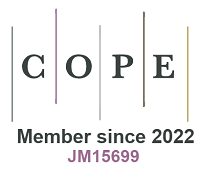REFERENCES
2. Feng, Y.; Long, S.; Tang, X.; et al. Earth-abundant 3d-transition-metal catalysts for lignocellulosic biomass conversion. Chem. Soc. Rev. 2021, 50, 6042-93.
3. Li, G.; Wang, R.; Pang, J.; Wang, A.; Li, N.; Zhang, T. Production of renewable hydrocarbon biofuels with lignocellulose and its derivatives over heterogeneous catalysts. Chem. Rev. 2024, 124, 2889-954.
4. Osman, A. I.; Nasr, M.; Aniagor, C. O.; et al. Synergistic technologies for a circular economy: upcycling waste plastics and biomass. Front. Chem. Sci. Eng. 2025, 19, 2507.
5. Liu, C. G.; Xiao, Y.; Xia, X. X.; et al. Cellulosic ethanol production: Progress, challenges and strategies for solutions. Biotechnol. Adv. 2019, 37, 491-504.
6. Zabed, H.; Sahu, J.; Boyce, A.; Faruq, G. Fuel ethanol production from lignocellulosic biomass: an overview on feedstocks and technological approaches. Renew. Sust. Energ. Rev. 2016, 66, 751-74.
7. Manochio, C.; Andrade, B.; Rodriguez, R.; Moraes, B. Ethanol from biomass: a comparative overview. Renew. Sust. Energ. Rev. 2017, 80, 743-55.
8. Yao, X.; Li, T.; Chung, S. H.; Ruiz-Martínez, J. Advances in the catalytic conversion of ethanol into nonoxygenated added-value chemicals. Adv. Mater. 2024, 36, e2406472.
9. Zhang, J.; Yoo, E.; Davison, B. H.; et al. Towards cost-competitive middle distillate fuels from ethanol within a market-flexible biorefinery concept. Green. Chem. 2021, 23, 9534-48.
10. Eagan, N. M.; Kumbhalkar, M. D.; Buchanan, J. S.; Dumesic, J. A.; Huber, G. W. Chemistries and processes for the conversion of ethanol into middle-distillate fuels. Nat. Rev. Chem. 2019, 3, 223-49.
11. He, L.; Zhou, B.; Sun, D.; et al. Catalytic conversion of ethanol to oxygen-containing value-added chemicals. ACS. Catal. 2023, 13, 11291-304.
12. Wang, J.; Qi, T.; Li, Z.; et al. A strategy of two-step tandem catalysis towards direct N-alkylation of nitroarenes with ethanol via facile fabricated novel Co-based catalysts derived from coordination polymers. J. Catal. 2019, 376, 106-18.
13. Wang, J.; She, W.; Li, X.; et al. A highly efficient Co-based catalyst fabricated by coordination-assisted impregnation strategy towards tandem catalytic functionalization of nitroarenes with various alcohols. J. Catal. 2021, 404, 462-74.
14. He, J.; Chen, L.; Liu, S.; Song, K.; Yang, S.; Riisager, A. Sustainable access to renewable N-containing chemicals from reductive amination of biomass-derived platform compounds. Green. Chem. 2020, 22, 6714-47.
15. Xu, L.; Shi, C.; He, Z.; et al. Recent advances of producing biobased N-containing compounds via thermo-chemical conversion with ammonia process. Energy. Fuels. 2020, 34, 10441-58.
16. Vitaku, E.; Smith, D. T.; Njardarson, J. T. Analysis of the structural diversity, substitution patterns, and frequency of nitrogen heterocycles among U.S. FDA approved pharmaceuticals. J. Med. Chem. 2014, 57, 10257-74.
17. Sridharan, V.; Suryavanshi, P. A.; Menéndez, J. C. Advances in the chemistry of tetrahydroquinolines. Chem. Rev. 2011, 111, 7157-259.
18. Muthukrishnan, I.; Sridharan, V.; Menéndez, J. C. Progress in the chemistry of tetrahydroquinolines. Chem. Rev. 2019, 119, 5057-191.
19. Zhao, X.; Rudolph, M.; Asiri, A. M.; Hashmi, A. S. K. Easy access to pharmaceutically relevant heterocycles by catalytic reactions involving α-imino gold carbene intermediates. Front. Chem. Sci. Eng. 2020, 14, 317-49.
20. Heo, Y. A.; Duggan, S. T. Niraparib: a review in ovarian cancer. Target. Oncol. 2018, 13, 533-9.
21. Macchia, M.; Cervetto, L.; Demontis, G. C.; et al. New N-n-propyl-substituted 3-aryl- and 3-cyclohexylpiperidines as partial agonists at the D4 dopamine receptor. J. Med. Chem. 2003, 46, 161-8.
22. Shahane, S.; Louafi, F.; Moreau, J.; et al. Synthesis of alkaloids of Galipea officinalis by alkylation of an α-amino nitrile. Eur. J. Org. Chem. 2008, 2008, 4622-31.
23. Shen, L.; Ye, Y. H.; Wang, X. T.; et al. Structure and total synthesis of aspernigerin: a novel cytotoxic endophyte metabolite. Chemistry 2006, 12, 4393-6.
24. Chander, S.; Ashok, P.; Zheng, Y. T.; et al. Design, synthesis and in-vitro evaluation of novel tetrahydroquinoline carbamates as HIV-1 RT inhibitor and their antifungal activity. Bioorg. Chem. 2016, 64, 66-73.
25. Ramnauth, J.; Renton, P.; Dove, P.; et al. 1,2,3,4-tetrahydroquinoline-based selective human neuronal nitric oxide synthase (nNOS) inhibitors: lead optimization studies resulting in the identification of N-(1-(2-(methylamino)ethyl)-1,2,3,4-tetrahydroquinolin-6-yl)thiophene-2-carboximidamide as a preclinical development candidate. J. Med. Chem. 2012, 55, 2882-93.
26. Holsworth, D. D.; Jalaie, M.; Belliotti, T.; et al. Discovery of 6-ethyl-2,4-diaminopyrimidine-based small molecule renin inhibitors. Bioorg. Med. Chem. Lett. 2007, 17, 3575-80.
27. Wang, X. F.; Wang, S. B.; Ohkoshi, E.; et al. N-aryl-6-methoxy-1,2,3,4-tetrahydroquinolines: a novel class of antitumor agents targeting the colchicine site on tubulin. Eur. J. Med. Chem. 2013, 67, 196-207.
28. Bai, L.; Sun, P.; Liu, Y.; et al. Novel aza-BODIPY based small molecular NIR-II fluorophores for in vivo imaging. Chem. Commun. 2019, 55, 10920-3.
29. Boyarskiy, V. P.; Belov, V. N.; Medda, R.; Hein, B.; Bossi, M.; Hell, S. W. Photostable, amino reactive and water-soluble fluorescent labels based on sulfonated rhodamine with a rigidized xanthene fragment. Chemistry 2008, 14, 1784-92.
30. Yamashita, K.; Imahashi, S.; Ito, S. Synthesis of benzylideneketone dyes and their photochemical properties as a sensitizer for alkali-developable photopolymerization systems. Dyes. Pigments. 2008, 76, 748-53.
31. Tan, Z.; Liang, Y.; Yang, J.; Cao, L.; Jiang, H.; Zhang, M. Site-specific oxidative C–H chalcogenation of (hetero)aryl-fused cyclic amines enabled by nanocobalt oxides. Org. Lett. 2018, 20, 6554-8.
32. Chen, X. W.; Zhao, H.; Chen, C. L.; Jiang, H. F.; Zhang, M. Hydrogen-transfer-mediated α-functionalization of 1,8-naphthyridines by a strategy overcoming the over-hydrogenation barrier. Angew. Chem. Int. Ed. Engl. 2017, 56, 14232-6.
33. Zheng, D.; Yang, M.; Zhuo, J.; et al. Regio- and stereoselective benzylic hydroxylation to synthesize chiral tetrahydroquinolin-4-ol and tetrahydro-1H-benzo[b]azepin-5-ol with Pseudomonas plecoglossicidas. J. Mol. Catal. B-Enzym. 2014, 110, 87-91.
34. Chen, C.; Pan, Y.; Zhao, H.; et al. Ruthenium(II)-catalyzed regioselective C-8 hydroxylation of 1,2,3,4-tetrahydroquinolines. Org. Lett. 2018, 20, 6799-803.
35. Zhao, H.; Zhao, S.; Li, X.; Deng, Y.; Jiang, H.; Zhang, M. Cobalt-catalyzed selective functionalization of aniline derivatives with hexafluoroisopropanol. Org. Lett. 2019, 21, 218-22.
36. Yi, C. S.; Yun, S. Y.; Guzei, I. A. Catalytic synthesis of tricyclic quinoline derivatives from the regioselective hydroamination and C–H bond activation reaction of benzocyclic amines and alkynes. J. Am. Chem. Soc. 2005, 127, 5782-3.
37. Jia, Y. X.; Kündig, E. P. Oxindole synthesis by direct coupling of C(sp2)-H and C(sp3)-H centers. Angew. Chem. Int. Ed. Engl. 2009, 48, 1636-9.
38. Lan, L.; Li, Y.; Zhu, J.; et al. Highly flexible polypyrrole electrode with acanthosphere-like structures for energy storage and actuator applications. Chem. Eng. J. 2023, 455, 140675.
39. Lohani, P. C.; Tiwari, A. P.; Chhetri, K.; et al. Polypyrrole nanotunnels with luminal and abluminal layered double hydroxide nanosheets grown on a carbon cloth for energy storage applications. ACS. Appl. Mater. Interfaces. , 2022, 23285-96.
40. Wang, S.; Chen, Y.; Hu, B.; Wang, Y.; Jing, X.; Li, Y. Polypyrrole micro/nanostructures and their soft materials in versatile forms: construction and applications. Mater. Chem. Front. 2024, 8, 434-54.
41. Jain, R.; Jadon, N.; Pawaiya, A. Polypyrrole based next generation electrochemical sensors and biosensors: a review. TrAC-Trend. Anal. Chem. 2017, 97, 363-73.
42. Wang, W.; Lv, Y.; Liu, H.; Cao, Z. Recent advances in application of polypyrrole nanomaterial in water pollution control. Sep. Purif. Technol. 2024, 330, 125265.
43. Knorr, L. Einwirkung des Diacetbernsteinsäureesters auf Ammoniak und primäre Aminbasen. Ber. Dtsch. Chem. Ges. 1885, 18, 299-311. (in German).
44. Paal, C. Synthese von Thiophen- und Pyrrolderivaten. Ber. Dtsch. Chem. Ges. 1885, 18, 367-71. (in German).
45. The Goodyear Tire & Rubber Company. Hydrogenation of heterocyclic compounds. GB395231A, 1933.
46. Hewitt, J. H.; West, T. F. Process for the preparation of compounds containing fused pyridine rings. US2358162A, 1944.
47. Lafon, L. 2,4,6-Trimethoxyphenyl 3-(1,2,3,4-tetrahydro-1-quinolinyl)propyl ketone, useful as sedative. FR2534914, 1984.
48. Biller, S. A.; Misra, R. N. 1,2,3,4-tetrahydro-8-quinolinol derivatives and anti-allergic use thereof. US4843082A, 1989.
50. Srimani, D.; Ben-David, Y.; Milstein, D. Direct synthesis of pyrroles by dehydrogenative coupling of β-aminoalcohols with secondary alcohols catalyzed by ruthenium pincer complexes. Angew. Chem. Int. Ed. Engl. 2013, 52, 4012-5.
51. Kallmeier, F.; Dudziec, B.; Irrgang, T.; Kempe, R. Manganese-catalyzed sustainable synthesis of pyrroles from alcohols and amino alcohols. Angew. Chem. Int. Ed. Engl. 2017, 56, 7261-5.
52. Pan, B.; Liu, B.; Yue, E.; et al. A ruthenium catalyst with unprecedented effectiveness for the coupling cyclization of γ-amino alcohols and secondary alcohols. ACS. Catal. 2016, 6, 1247-53.
53. Michlik, S.; Kempe, R. Regioselectively functionalized pyridines from sustainable resources. Angew. Chem. Int. Ed. Engl. 2013, 52, 6326-9.
54. Hille, T.; Irrgang, T.; Kempe, R. Synthesis of meta-functionalized pyridines by selective dehydrogenative heterocondensation of β- and γ-amino alcohols. Angew. Chem. Int. Ed. Engl. 2017, 56, 371-4.
55. Wang, B.; Li, M.; Zhang, S.; Wu, H.; Liao, Y.; Li, H. Synergistic effect between Co single atoms and nanoparticles enables selective synthesis of bio-based benzimidazoles. Appl. Catal. B-Environ. 2023, 327, 122454.
56. Mastalir, M.; Glatz, M.; Pittenauer, E.; Allmaier, G.; Kirchner, K. Sustainable synthesis of quinolines and pyrimidines catalyzed by manganese PNP pincer complexes. J. Am. Chem. Soc. 2016, 138, 15543-6.
57. Forberg, D.; Schwob, T.; Kempe, R. Catalytic condensation for the formation of polycyclic heteroaromatic compounds. Nat. Commun. 2018, 9, 1751.
58. Shee, S.; Ganguli, K.; Jana, K.; Kundu, S. Cobalt complex catalyzed atom-economical synthesis of quinoxaline, quinoline and 2-alkylaminoquinoline derivatives. Chem. Commun. 2018, 54, 6883-6.
59. Chakraborty, S.; Piszel, P. E.; Hayes, C. E.; Baker, R. T.; Jones, W. D. Highly selective formation of n-butanol from ethanol through the Guerbet process: a tandem catalytic approach. J. Am. Chem. Soc. 2015, 137, 14264-7.
60. Zhang, J.; An, Z.; Zhu, Y.; et al. Ni0/Niδ+ synergistic catalysis on a nanosized Ni surface for simultaneous formation of C–C and C–N bonds. ACS. Catal. 2019, 9, 11438-46.
61. Zhao, Y.; Li, F.; Zhang, R.; Evans, D. G.; Duan, X. Preparation of layered double-hydroxide nanomaterials with a uniform crystallite size using a new method involving separate nucleation and aging steps. Chem. Mater. 2002, 14, 4286-91.
62. Grosvenor, A. P.; Biesinger, M. C.; Smart, R. S.; Mcintyre, N. S. New interpretations of XPS spectra of nickel metal and oxides. Surf. Sci. 2006, 600, 1771-9.
63. Das, S.; Thakur, S.; Bag, A.; Gupta, M. S.; Mondal, P.; Bordoloi, A. Support interaction of Ni nanocluster based catalysts applied in CO2 reforming. J. Catal. 2015, 330, 46-60.
64. Chen, W.; Chan, A.; Sun-waterhouse, D.; Moriga, T.; Idriss, H.; Waterhouse, G. I. Ni/TiO2: a promising low-cost photocatalytic system for solar H2 production from ethanol-water mixtures. J. Catal. 2015, 326, 43-53.
65. Ma, G.; Liu, D.; Allen, H. C. Piperidine adsorption on hydrated alpha-alumina (0001) surface studied by vibrational sum frequency generation spectroscopy. Langmuir 2004, 20, 11620-9.
66. Zhao, J.; Chen, H.; Xu, J.; Shen, J. Effect of surface acidic and basic properties of the supported nickel catalysts on the hydrogenation of pyridine to piperidine. J. Phys. Chem. C. 2013, 117, 10573-80.
67. Aarts, J.; Sassen, N. Piperidine adsorbed on Pd(111) studied by electron energy loss spectroscopy. Surf. Sci. 1990, 225, 35-9.
68. Ochoa, J. V.; Trevisanut, C.; Millet, J. M.; Busca, G.; Cavani, F.
69. Zhang, Z.; Wang, Y.; Lu, J.; et al. Pr-doped CeO2 catalyst in the prins condensation-hydrolysis reaction: are all of the defect sites catalytically active? ACS. Catal. 2018, 8, 2635-44.
70. Rousseau, S.; Marie, O.; Bazin, P.; Daturi, M.; Verdier, S.; Harlé, V. Investigation of methanol oxidation over Au/catalysts using operando IR spectroscopy: determination of the active sites, intermediate/spectator species, and reaction mechanism. J. Am. Chem. Soc. 2010, 132, 10832-41.








